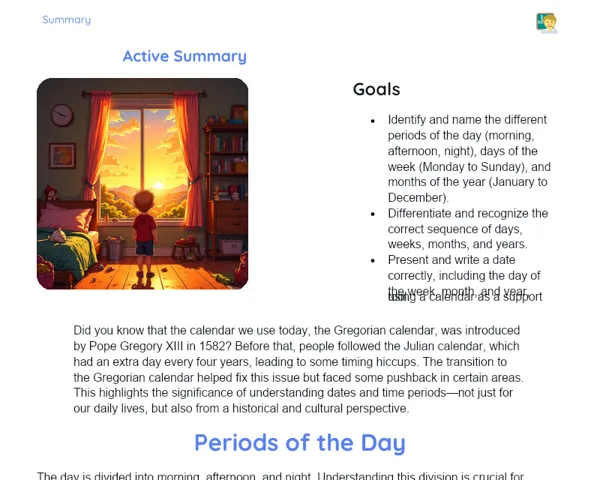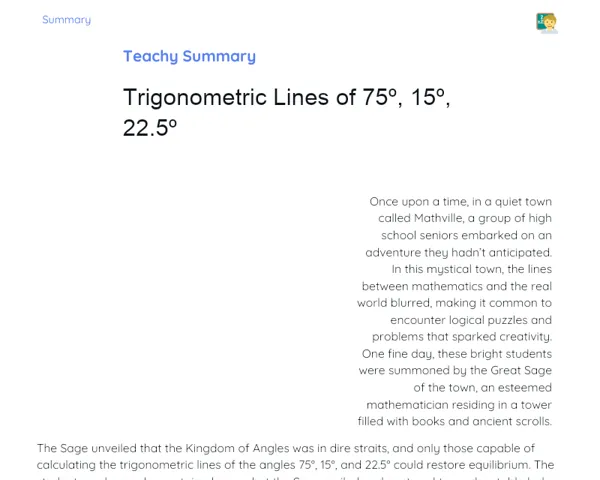Goals
1. Understand the importance of reading the time accurately on both digital and analog clocks.
2. Identify and differentiate the hour, minute, and second hands on an analog clock.
3. Read and interpret the time displayed on a digital clock.
4. Develop precision skills and attention to detail when reading clocks.
Contextualization
Being able to read the time accurately is a fundamental skill in our everyday lives. Think about needing to get to school on time, meeting up with friends, or attending a job interview. Knowing how to tell the time on various types of clocks, whether they're digital or analog, plays a crucial role in managing your time and being punctual—a skill that is invaluable in all situations. For instance, a doctor needs to know the exact time to give medication to patients, while an engineer has to stick to a tight schedule to finish a project on time.
Subject Relevance
To Remember!
Identifying the Clock Hands
To read an analog clock correctly, it's important to identify and differentiate the hour, minute, and second hands. The hour hand is generally shorter and moves more slowly, showing the current hour. The minute hand is longer and moves in minute increments, while the second hand is the longest and moves continuously to show the seconds.
-
Hour Hand: Shorter, moves slowly.
-
Minute Hand: Longer than the hour hand, moves in minute increments.
-
Second Hand: The longest, moves continuously.
Reading Time on Analog Clocks
To read the time on an analog clock, you need to look at where the hour and minute hands are pointing. The position of the hour hand, in relation to the numbers on the clock face, tells you the hour. The position of the minute hand, concerning the minute markers on the clock, tells you how many minutes it is. For an accurate reading, you should also pay attention to the position of the second hand.
-
Check the position of the hour hand to determine the hour.
-
Observe the position of the minute hand to identify the minutes.
-
Consider where the second hand is for an accurate reading.
Reading Time on Digital Clocks
Digital clocks display the time in numbers, which makes reading easier. The screen generally shows hours and minutes, and may even include seconds. It's also important to understand the 12-hour format (AM/PM) and the 24-hour format often used in the military.
-
Numerical Format: Hours and minutes are shown in numbers.
-
12-Hour Format: Uses AM and PM to distinguish between morning and afternoon.
-
24-Hour Format: Commonly used in military and international settings.
Practical Applications
-
Doctors rely on precise time reading to administer medications at scheduled times.
-
Pilots depend on accurate time reading to follow flight schedules and ensure safety.
-
Engineers use time management to meet strict deadlines for their projects.
Key Terms
-
Hour Hand: Indicates the hour on the analog clock.
-
Minute Hand: Indicates the minutes on the analog clock.
-
Second Hand: Indicates the seconds on the analog clock.
-
Digital Clock: Displays time in numerical form.
-
AM/PM: Indicates before noon (AM) and after noon (PM).
-
24-Hour Format: Time system that counts from 0 to 23 hours.
Questions for Reflections
-
How can knowing how to read the time accurately impact your daily routine?
-
Think of a profession you’re interested in. How would being precise with time reading be significant in that job?
-
How can practising reading both analog and digital clocks help you be more responsible and organised with your time?
Time Reading Challenge
Put your clock reading skills to the test with this fun and practical activity.
Instructions
-
Grab a toy clock or your paper clock that you made in class.
-
Ask a friend or family member to set the clock to a specific time without you seeing it.
-
Try to guess the correct time just by looking at the hands.
-
Then check if your reading is correct and adjust if needed.
-
Repeat the process five times with different times.



